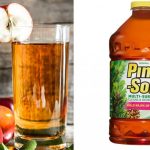Amy B Wang of the Washington Post writes that officials at a preschool in Hawaii have apologized after young children were given Pine-Sol instead of apple juice to drink during a morning snack time, a mix-up that health officials said occurred because the two liquids were “the same color.”
 The incident involving the household cleaning liquid took place on Tuesday at the preschool at Kilohana United Methodist Church in Honolulu.
The incident involving the household cleaning liquid took place on Tuesday at the preschool at Kilohana United Methodist Church in Honolulu.
A classroom assistant prepared the snacks — which should have been crackers and apple juice — in the preschool’s kitchen, according to an inspection report by the Hawaii State Department of Health.
Instead of juice, however, the assistant reportedly grabbed a container of Pine-Sol, a decades-old brand of household cleaner that comes in a variety of scents, though none particularly reminiscent of apple juice.
The preschool’s cleaning supplies are “stored below the kitchen sink and in the janitors room,” the report stated, while food items “are properly stored and labeled in the kitchen cabinets.”
“I think it’s extremely terrifying,” parent Turina Lovelin told KHON News. “It’s very, very scary, but it’s hard for me, or any of the people that I’ve spoken to, to understand how it happened in the first place.”

